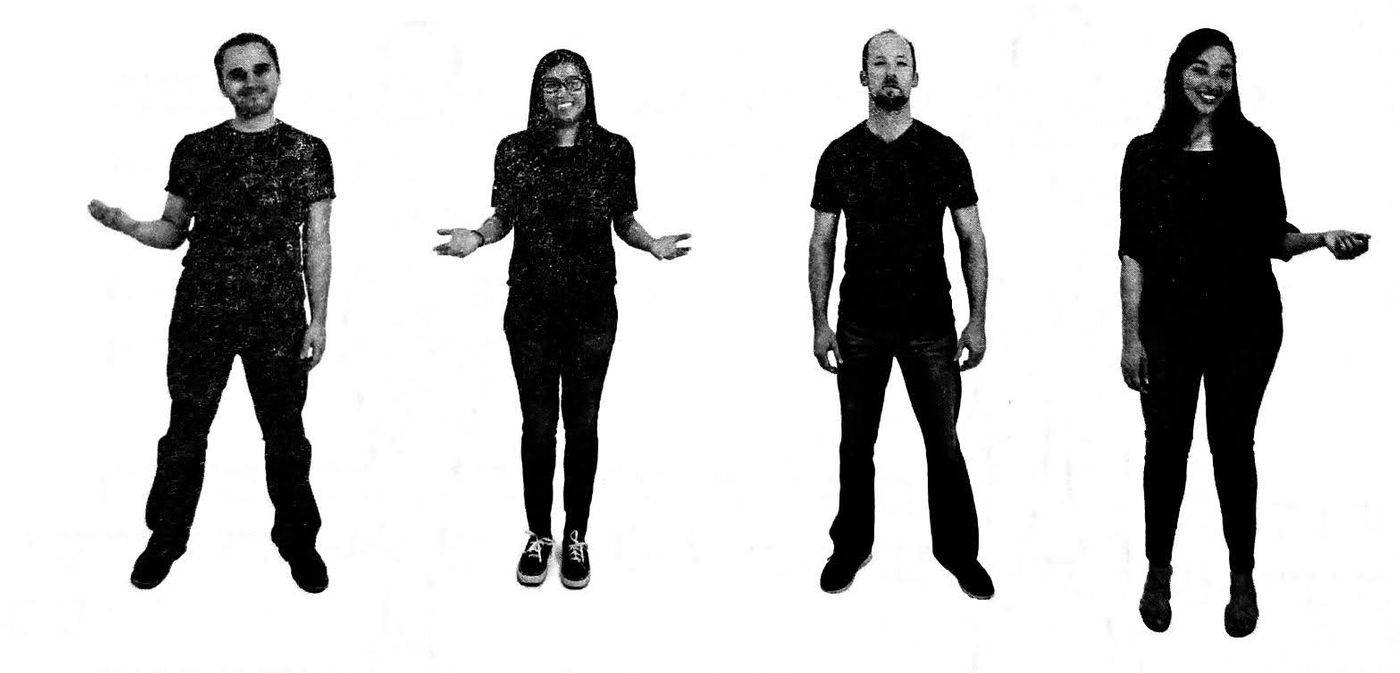
半導體外商的小小螺絲釘,遊走於廢青與社畜之間。熱愛閱讀,喜歡透過書本探索外在、內化自我。希望藉由書寫打開與世界交流的一扇窗。 個人部落格:https://maxjamesread.com/
"The Science of Getting Along With Anyone": 6 Behavioral Steps That Make Your Communication With Others Unfavorable!

Do you find it difficult to communicate with people? Will you worry about how to integrate into the new environment? Running social events often do not know what to chat about? Even close people around you rub against each other from time to time, making each other very tired? Then the "Science that Can Get Along Well With Anyone" introduced today will be a good helper for you!
Author Vanessa is an expert in interpersonal relationships and founded The Science of People, a laboratory dedicated to understanding the workings of human social behavior and scientifically teaching communication skills.
I read this book after I came into contact with introvert psychology a few years ago. I know that as long as introverts can communicate well with others through learning, they began to look for some interpersonal books to learn. This book was one of my favorites I read at the time. I happened to see it on the bookcase this week, so I will introduce it.
This book is divided into 3 parts: 5 minutes , 5 hours and 5 days , with time as the division, to describe the communication skills in different stages of getting along. Here are 6 tips from me to help you strengthen your social skills.
[5 minutes: Preliminary exploration]
The initial contact between people is very important, and often the first impression determines the subsequent communication will not go smoothly. So how do you get a score? Let's start with non-verbal actions.
[Step 1: Make good use of non-verbal movements]
When communicating with people, good use of limbs can greatly increase points. But what kind of body method? The book proposes 3 techniques:
- Use your hands wisely <br class="smart">Let the other person see your hands, it's that simple. This stems from the ancient survival instinct. Seeing the opponent's hand can ensure that there is no weapon in hand. It has been passed down to the present that as long as the hand can be seen, people will be more relaxed and willing to show support.
- Eye Contact <br class="smart">Eye contact can help build a connection, so don't forget to keep your eyes on each other when communicating. However, it will be a bit embarrassing to stare at others all the time. The book recommends that 60~70% of the time be in contact.
- The Take-Off Winner Pose <br class="smart">This is similar to the high-power pose mentioned in Posture Determines Who You Are . Such a gesture is easier to win the trust of others. But be aware that if it is too strong, it will be disgusting. You can refer to the following 4 postures, which will be more natural.

[Step 2: Find an extension in spoken language]
After talking about non-verbal skills, you still have to go back to speech. After all, you can't stare at the other person without speaking. So how do you start a conversation? The stereotypes like "What is your job?" and "How are you?" are really unappealing. It is suggested in the book that the statement in the right column of the following table can be used to increase the extensibility of the conversation:

Once you have the beginning, try to keep the conversation going by finding clues as much as possible in the person's appearance (e.g. hairstyle, jewelry, accessories) or conversation (e.g. interests, accent, idioms). Use the following sentence patterns:
- I'm curious……
- I noticed that……
- You mentioned……
Of course, this premise is that you have careful observation and are really curious. If you insist on talking about the topic awkwardly, the other party will still feel it.

[5 hours: close inspection]
Creating a first impression is just a starter, and you can't stop at this stage forever. So next we need to take a closer look.
[Step 3: Analyze Personality Traits]
Everyone has a different personality and likes to communicate differently. The book cites the "5 Factors Theory of Personality" compiled by psychologists to help you understand people's basic personalities:
- Openness <br class="smart">High openness indicates a preference for novelty and change; low openness indicates a preference for routines and habits.
- Rigorous <br class="smart">High rigor means they are good at organizing and digging into details, and love to-dos and schedules; people with low rigor prefer a general strategy.
- Extroverts <br class="smart">Extroverts gain energy from social situations; introverts, on the other hand, become exhausted from social exhaustion.
- Friendliness <br class="smart">People with high friendliness are easy to get along with and like to take care of others; people with low friendliness are more practical, suspicious, and tend to exclude emotions when making decisions.
- <br class="smart">Nervousness <br class="smart">People with high neuroticism are easy to worry and have large mood swings; people with low neuroticism are more stable and have less ups and downs.
You can try to judge your own tendencies first, and then study the preferences of others to find out how to get along better with each other. The book has a detailed explanation of the coping of each character, and I leave it to everyone to read on their own.
In particular, the author emphasizes that there are no "best" or "normal" personality tendencies. These classifications only paint the two ends of the personality spectrum. Each bias has its advantages and disadvantages, and knowing these is to help you understand others better, not to demean certain characters.
[Step 4: Make good use of appreciation language]
In addition to analyzing personality traits, the "language of appreciation" can also be used to improve the quality of getting along with others. Everyone's favorite language of appreciation is different, and can be divided into the following 5 types:
- Affirmative Words <br class="smart">This type of person expresses caring orally or in writing.
- Gifts <br class="smart">If you like to express your gratitude with candy or bouquets, you are the gift type.
- Physical Contact <br class="smart">This type of person uses physical contact, such as pats on the back and arms around the shoulders, to express care and appreciation.
- Acts of Service <br class="smart">People who enjoy this language show concern by doing things for others. Such as making dinner, or making items.
- Quality Time <br class="smart">Some people like company more than others, and these people care about quality time together.
Such preferences are usually bidirectional, meaning that people who like to give gifts generally like to receive gifts, and the same is true for other items. Here, you can also think about which appreciation language you prefer, and then judge which category the people around you belong to. In this way, you can do what you like without expressing your feelings in a way that the other person does not love.

[5 days: deep communication]
Finally, I will introduce the following two tips to help you communicate with people more deeply.
[Skip 5: Show vulnerability]
We are so accustomed to showing our good side, and we are afraid to show our vulnerability. But showing vulnerability and sharing shy secrets are actually the ingredients that advance the relationship.
Vulnerability, as the author puts it, is fascinating because it highlights our "human" nature. Too perfect will make people boring and distanced.
Of course, it’s not easy to admit vulnerability directly. Maybe try a more indirect way first: seek advice and help. Asking for advice can be said to indirectly admit vulnerability, revealing one's own shortcomings, and at the same time enticing the other person to speak and highlight their strengths.
[Skip 6: Acquiring coherence]
The final trick is homology . As the author says, many times we are so focused on ourselves that we forget to be attuned to the feelings, needs and values of others. The use of coherence techniques allows our frequencies to resonate with others. The book recommends starting from the following three aspects:
- Demonstrate Curiosity <br class="smart">A genuine curiosity about people is the only way to bring people closer together.
- Create Reciprocity <br class="smart">The more you show interest in others, the more interested they will be in you. So if you want to be closer to someone, express that feeling more!
- Create a sense of belonging <br class="smart">Everyone wants to be accepted for who they are. Therefore, giving others a sense of belonging is the key to the evolution of relationships.
To put it simply, attunement is about making people feel liked, needed, and understood. When you can do this, you can communicate more deeply with people.

【Summarize】
Come to the summary section. First, we can use our body to enhance the first impression, and we can make good use of spoken language techniques to find topics; then we can further understand the personality tendency of the other party and appreciate the language, and then choose what we like; finally, we can use seeking assistance and coherence to achieve deeper communication.
The book introduces a large number of social psychology concepts and provides practical courses of action. It does provide some direction for me who is not so good at communicating with others. I am in the semiconductor industry, and I need to meet a large number of strangers every day, and deal with various customers and colleagues. The content of the book does provide a lot of help.
But human nature is actually very complex, here is an example. One of my favorite parts of reading this book is micro-expressions. The author introduces seven kinds of micro-expressions, and points out that they can grasp the real emotions of others through these emoji codes. This technique appeals to me quite a bit, and for a while I also try to observe other people's expressions, trying to find subtler emotional clues.
But then I read 4Think's "How to have a deep understanding of "emotion"? 〉 , it is mentioned in the text that the same emotion is displayed in different ways in different individuals. In fact, the effect of previous micro-expression research may be exaggerated.
Of course I wouldn't say that these social technologies are all scams. I think you can use the test mentality to practice the skills in the book. If you think it works, continue to use it. If it doesn't work, don't be discouraged. Just try another one.
Like me, I really like the part of the book that explores personality and appreciates language. For me, these technologies help understand myself more than just helping others. After all, in order to communicate with people, in addition to groping outward, you have to look deep inward to find the most comfortable way to get along with each other.
Finally, as the author emphasizes: Pretending is useless . People are very sensitive, and skills cannot hide your true feelings. If the other party finds out that they are not the same, they will be even more mind-blowing. I think that only by knowing and showing your true self can you communicate more healthily with others. And only on this basis, these skills can play the biggest role!
Articles you may also be interested in:

↓↓You are also welcome to follow the Facebook and mourning of "Mrs's Reading Space"↓↓
James' reading space FB
James' reading space IG
Like my work?
Don't forget to support or like, so I know you are with me..
Comment…